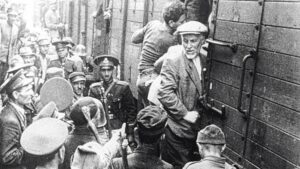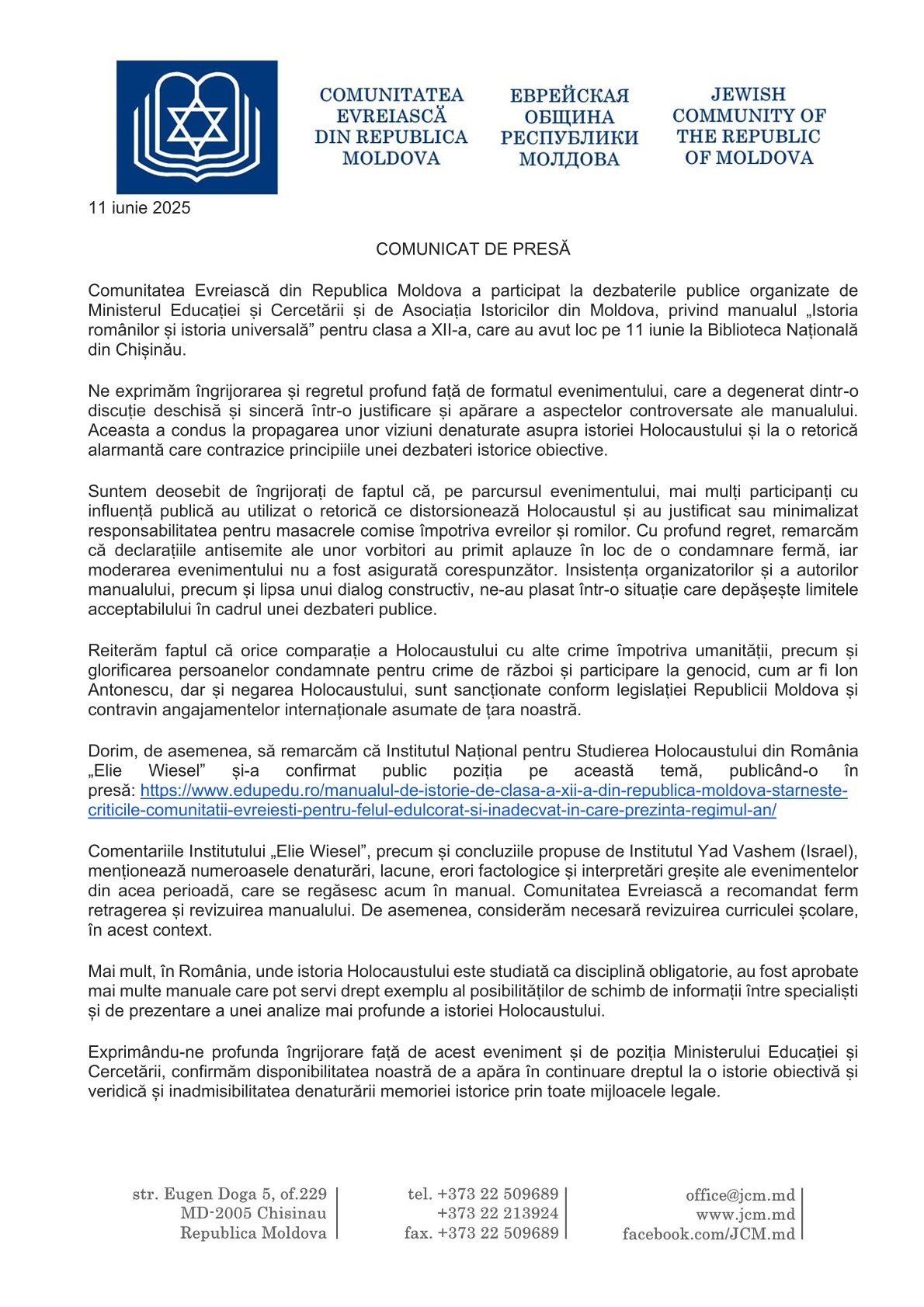At the end of June, we commemorate a tragedy of historic proportions – the bloody Iași Pogrom. Between June 27 and July 2, 1941, a mass massacre of Jews took place in the Romanian city of Iași.
According to data from the Romanian authorities, in just six days, at least 8,000 Jews were killed. Another 5,000 Jews were deported from Iași in cattle cars, of whom only 1,011 survived. In total, 14,850 Jews perished during the events in Iași. The pogrom was not a spontaneous outburst but was orchestrated by the fascist government of Ion Antonescu, who declared a “policy of purifying the Romanian nation” – which meant, above all, the removal of Jews from the country. The Iași pogrom was preceded by a long period of preparation. In the late 1930s, antisemitic legislation was enforced in Romania, officially implemented in 1938 by then-Prime Minister and well-known poet Octavian Goga. His name still appears on a street in the center of the “Jewish Chișinău,” and his bust remains on the Alley of Classics in the central public garden.
In 1940, the Iron Guard came to power, completely stripping Romania’s Jews of their civil rights. In January 1941, during the Iron Guard rebellion, major pogroms against Jews erupted across Romania, including in Bucharest, and lasted for two days.
The ultimatum of June 28, 1940, which led to the transfer of Bessarabia from Romania to the Soviet Union – seen by some as a blessing for the Moldovan people and by others as a national tragedy for Romania – also had other significant historical consequences. Under Romanian-Soviet agreements, by the end of 1940, up to 149,000 Romanian Jews crossed from Romania into Bessarabia. Some of them were originally from Bessarabia and had been studying or working in the Old Kingdom, but the majority were Jews who had lived for generations west of the Prut River. These were people seeking refuge from fascism within their own country, under Soviet protection. At that time, a joint Romanian-Soviet military commission operated to document the deaths and severe injuries inflicted on Romanian Jews during their transit to the Soviet Union. Sadly, many of the Romanian Jews who crossed into Bessarabia in 1940 were ultimately murdered by fascists in 1941 during the Holocaust.
The 1941 Iași Pogrom became a kind of grim rehearsal for the atrocities that would be committed by the fascist regime in Bessarabia and Transnistria from 1941 to 1944. Preserving the memory of this event is as vital as commemorating other deeply tragic episodes in our shared history.














